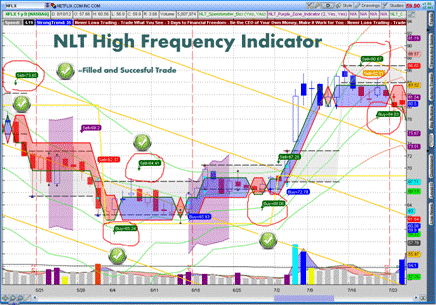Introduction
In the fast-paced world of forex trading, where milliseconds can make or break a trade, high-frequency trading stands out as a powerful strategy employed by seasoned traders seeking lightning-fast profits. This advanced technique involves executing a vast number of trades in quick succession, exploiting even the slightest market inefficiencies to amass substantial gains. While high-frequency trading might seem daunting to newcomers, understanding its nuances can pave the path to unlocking its potential in the forex market.

Image: www.boomandcrashstrategy.com
At the core of high-frequency forex trading lies advanced algorithms and specialized trading software that analyze vast amounts of market data in real-time. By leveraging lightning-fast execution speeds and sophisticated strategies, these automated systems continuously scan for profitable opportunities, placing and closing numerous trades in a matter of seconds. This approach differs significantly from traditional forex trading, which typically involves manual order placement and relies on technical analysis to identify trading opportunities.
Types of High-Frequency Forex Trading Strategies
The world of high-frequency forex trading encompasses a diverse array of strategies, each meticulously tailored to harness specific market conditions. Among the most prevalent strategies are:
- Scalping: This strategy aims to capitalize on minute price fluctuations, generating small profits from a high volume of trades. Scalpers typically enter and exit positions within a few seconds or minutes, repeatedly profiting from the slightest market movements.
- Latency Arbitrage: This strategy exploits the time lag between different exchanges or trading platforms, enabling traders to buy and sell the same asset at varying prices. By leveraging the speed advantage of high-frequency trading platforms, latency arbitrageurs can capture the discrepancy between prices and pocket the profit.
- Statistical Arbitrage: This complex strategy involves identifying and exploiting discrepancies between the prices of related financial instruments, such as currency pairs or futures contracts. By analyzing historical data and identifying statistical patterns, traders can create sophisticated trading algorithms that capitalize on these anomalies.
- News-Based Trading: High-frequency traders can harness the power of real-time news feeds to identify and react to market-moving events. By integrating news analysis into their trading algorithms, traders can anticipate market reactions and position themselves accordingly.
Benefits of High-Frequency Forex Trading
The allure of high-frequency forex trading stems from its potential to generate substantial profits in a short timeframe. Proponents of this strategy often cite the following advantages:
- High Probability of Success: By continuously monitoring the market and executing numerous trades, high-frequency trading strategies aim to increase the probability of successful trades, reducing the risk associated with individual orders.
- Reduced Transaction Costs: High-frequency trading typically involves low transaction costs, as traders benefit from economies of scale and negotiate favorable fees with trading platforms.
- Enhanced Scalability: High-frequency trading strategies are highly scalable, allowing traders to increase their trading volume without compromising efficiency.
Risks of High-Frequency Forex Trading
Despite its potential benefits, high-frequency forex trading also carries inherent risks that traders must acknowledge and manage effectively:
- High Technological Dependency: High-frequency trading relies heavily on advanced technology, including trading software and algorithms. Any technical glitches or infrastructure issues can disrupt trading operations, leading to losses.
- Knowledge and Expertise Required: High-frequency trading demands a deep understanding of market dynamics, programming, and financial modeling. Traders without adequate knowledge and expertise may struggle to implement and manage successful strategies.
- Market Volatility: High-frequency trading strategies perform optimally in stable market conditions. Sudden market fluctuations or unexpected events can disrupt trading algorithms and lead to substantial losses.

Image: uyesyni.web.fc2.com
High Frequency Forex Trading Strategy
Conclusion
High-frequency forex trading presents a unique opportunity for traders to capitalize on fleeting market inefficiencies and potentially generate substantial profits. While the allure of this fast-paced strategy is undeniable, it is imperative for traders to fully comprehend the associated risks and possess the necessary knowledge and expertise to succeed. By embracing cutting-edge technology, traders can harness the power of high-frequency trading while mitigating potential pitfalls. Ultimately, the path to success in this dynamic realm lies in a harmonious blend of technological prowess, market acumen, and unwavering discipline.






